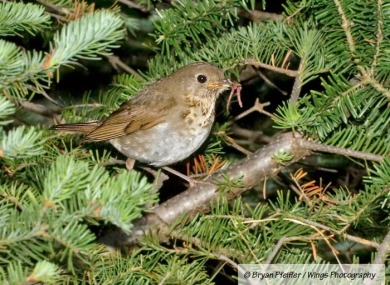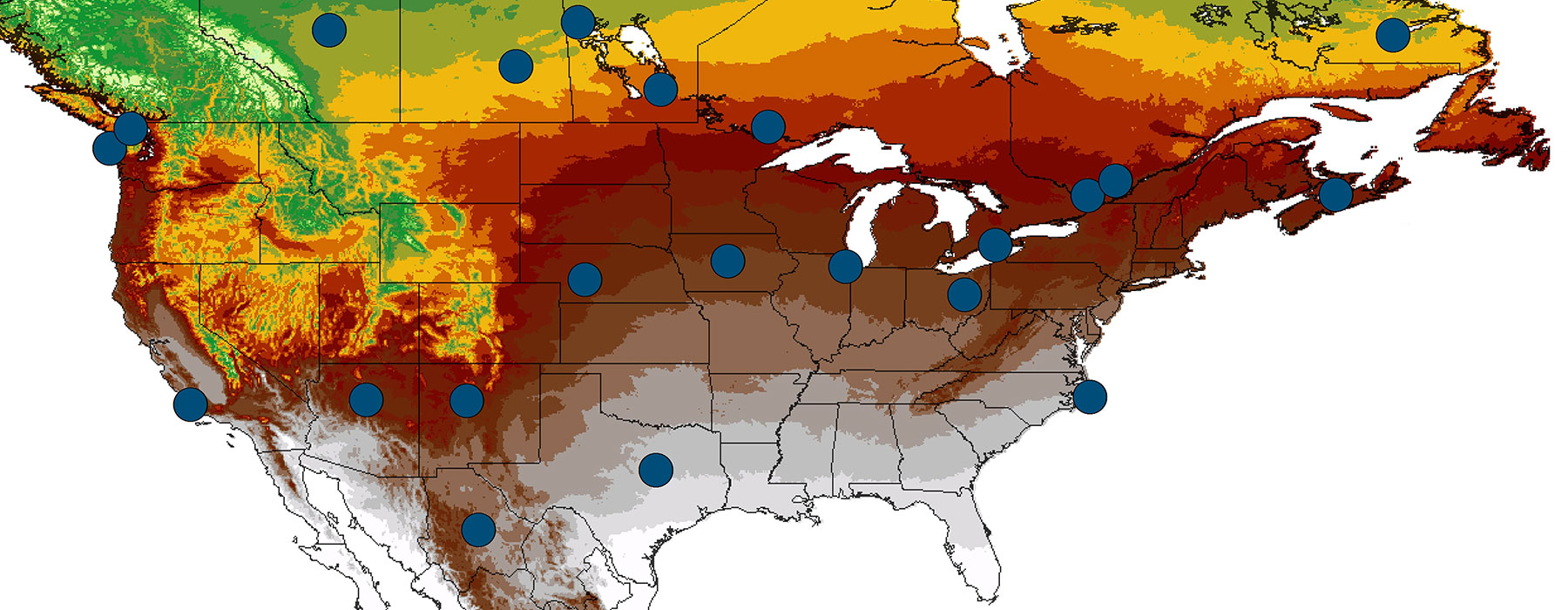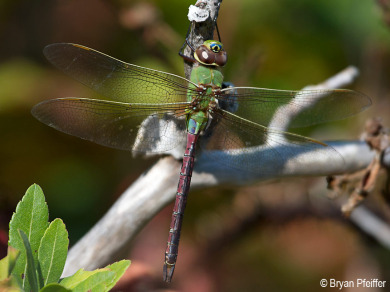Ornithologists for decades have wrestled with an inconvenient fact of avian biology: our study subjects fly away, often great distances. We track birds as best we can with leg bands, radio transmitters, and other gadgets – sometimes with low returns on our investment. But now VCE has a powerful new tool for wildlife research: nuclear chemistry.
Birds and other wildlife carry in their tissue messages about where they have been and what they have eaten. These clues show up in distinctive elements we call "stable isotopes." By examining these elements in their tissue, we can learn a lot about what birds and insects have been doing while they've been long gone.
Stable isotopes are elements with the standard number of protons and electrons but varying numbers of neutrons. Unlike other such atomic anomalies (which can be radioactive), these isotopes are safe. And they’re stable in animal tissue – the feather of a bird, for example, or the wing of a dragonfly.
More important for us, the relative abundance of some stable isotopes can vary with location: latitude, altitude, and distance from the ocean. And certain wild foods carry their own distinctive stable isotopes. In the food they eat and water they drink, wildlife take up these isotopes, which we can use as biological tracers. Here are a few examples:
Bobolinks
To be more effective in the conservation of Bobolinks, VCE needed to know what they were eating on their wintering grounds. Cultivated rice farms in South America, for example, could be exposing Bobolinks to harmful pesticides. But our biologists didn’t need to fly south to learn what Bobolinks were eating. The birds unwittingly carried evidence north to us here in the U.S. in the form of a stable isotope.
Unlike most songbirds, Bobolinks molt all flight feathers twice each year: just after breeding here in the north and again while feasting in the grasslands and rice fields of central South America. So when Bobolinks returned north for breeding in spring, we collected feathers from three populations across North America and analyzed an isotope of Carbon to see what different breeding populations had been eating in winter.
The upshot: one-fourth of the Bobolink’s diet consists of rice during the winter molt – a time when rice is generally available. A small proportion of birds appear to be eating nothing but rice, and others never touch it. Most switch back and forth. For most Bobolinks during their winter molt, rice can be all they eat for a few days or weeks, but the bulk of their diet comes from other sources. Although rice is an important component of the Bobolink diet during winter molt, it is an ephemeral source, and seeds from other sources, presumably grasslands, are an important stock food.
 Bicknell’s Thrush
Bicknell’s Thrush
Feathers and their stable isotopes aren’t the only tissues that speak volumes on a bird’s behalf. So do toenails. VCE has evidence that wintering Bicknell’s Thrushes may segregate by habitat—in cloud forests, where they can find ample insects for feeding, or lower-quality second-growth habitat, where fruit may comprise a larger part of the winter diet. Our findings also suggest that males may occupy the better montane winter habitat and females the less desirable regenerating forest, which may explain the skewed 3:1 male-to-female sex ratio observed on the breeding grounds. It’s a bigh concern.
Thrushes arriving on North American breeding grounds each spring carry evidence, in their toenails, of the winter habitat they occupied. Deuterium levels help us determine whether a given thrush was feeding in the montane cloud forests or in lowland habitats. Additionally, an isotope of nitrogen offers insights into whether a bird’s diet was largely fruit or insect. Our intent is to investigate any links between breeding success here in North America and where Bicknell’s Thrushes spend the winter and what they eat.
Common Green Darner
VCE is helping to unravel the mysteries of dragonfly migration. When dragonflies grow up as nymphs in water, they incorporate the local deuterium ratio into their tissue. It’s like a dialect that a dragonfly carries for life – whether as a nymph in Michigan or a free-flying adult in migration over Miami. A Common Green Darner that we might catch on the wing in Mexico unwittingly carries a particular deuterium ratio, a birth certificate that tells us generally where it grew up. Because we can’t band dragonflies, or use radio tracking for them, stable isotopes are helping us to learn their migratory routes.


